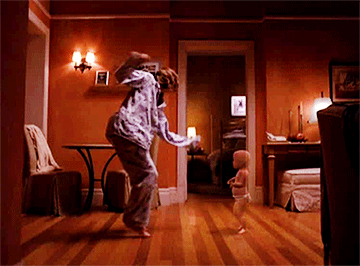
THE ORIGIN OF MEMES
by Kit Vickery
Mar 08, 2018
An internet meme is any idea expressed in a form of web-based content. This includes a photo, a video, a person, an animal, a fictional character, an event, a song, a belief, an action, a GIF, a symbol, a word, a game, or anything else you can find on the world wide web.
Grumpy Cat, Rickrolling, Left Shark, and the optical illusion dress are all recent examples of memes born or popularised on the internet.
When one of these ideas is shared over a large portion of the internet, it is considered to have gone viral which is a key concept in the idea of what a meme is.
Some have described a meme as something that has a clearly definable Message, the ability for Evolution or remix, an aspect of Malleability for changing characteristics without losing the original post, and a viral Effect.
In simple terms, an internet meme is anything that reaches an incredibly high amount of individual internet users.
Memes have existed in some form for millennia, but I recently asked myself, “what was the first internet meme?”
The term ‘meme’ was created by English author and biologist Richard Dawkins in his 1976 book The Selfish Gene, where he defined it as the equivalent to culture as genes are to humans.
He theorises that ideas are like organisms that breed and mutate, forming the basis for human culture. He proposed the name mimeme, from the Greek word meaning “that which is replicated”. He then shortened it to meme as it sounded more like gene.
In a 1993 issue of Wired, ‘meme’ was defined as an “infectious idea, much as viruses leaping from body to body” but this concept didn’t really take off until after the turn of the millennia.
In the 2001 PlayStation game, Metal Gear Solid 2: Sons of Liberty, recurring clones of the main character were called memes and the word was propagated on sites such as 4chan, Something Awful, and Reddit.
The word reached its peak popularity in 2012, skyrocketing into mainstream culture. This is where most people remember seeing their first meme but did anyone ever look back into the history?

The Google Trends graph for the search term 'memes' from 2004 till now.
It is reasonable to assume that the first meme will pre-date the internet, but for the purposes of this research, we will focus on the first internet iteration of a meme as we know it today. In order to do this, we must define some stages and types of meme.
Text-based emoticons, such as :-), are the first web-based popular craze as they were first sighted in 1983. This doesn’t fit into the definition of a meme as there is very little that can be evolved from that.
Another contender for the first meme is the “All your base are belong to us”. This dates back to 2000 and mocks a shoddy English translation of a 1989 Japanese Sega Genesis game, Zero Wing.
This is the first example of an “image macro” meme, a “white block letters on an image”. This is what most people remember as their first meme and has been reproduced in memes such as ‘Chemistry Cat’ and ‘Bad Luck Brian’

An example of the popular 'Chemistry Cat' image
But the first internet meme was actually created in 1996 by graphic designer Michael Girard. Girard wanted to show that motion could be programmed and projected by computers so he designed Baby Cha-Cha-Cha, colloquially known as the Dancing Baby.
Girard’s employer, Autodesk, sent the demo to other developers to show it off and a LucasArts developer turned it into a GIF.
After that, it spread into mainstream culture and was even shown on an episode of Ally McBeal, a 90’s show about a single lawyer looking for love whilst working for a law firm with her ex-boyfriend and his wife.

Ally and her tiny dancing companion.
While the Dancing Baby is widely regarded as the first internet meme, the subject is such a complex idea to define that there may be a meme that predates it that we’ve all overlooked…




